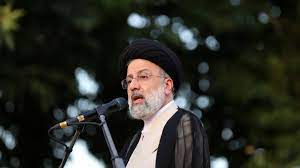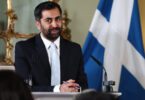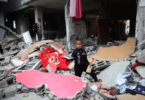Iranian President Ebrahim Raisi has recently announced that his country would not start a war with anyone but it would respond strongly to efforts bullying. According to Raisi, Iran’s military power is not and never has been a threat to any country. Rather, it ensures security that neighbors can rely on and trust.
Raisi’s comments came after days of speculation about how Washington might retaliate after three US soldiers were killed and 40 others were injured last Saturday in a strike on the US military in Jordan. Previously, US President Joseph R. Biden approved the plan for the US’s military strikes against Tehran back militias, Iranian personnel and facilities in Iraq and Syria. Whilst, that plan has been implemented by the US military through air strikes and sea-based missile attacks against the targets stretched across multiple territories in Iraq, Syria, and adjoining territorial waters in the Gulf of Eden and the Red Sea.
According to the Pentagon, the strikes carried out by US Central Command forces included more than 85 targets across seven facilities used by groups affiliated with Iran’s Islamic Revolutionary Guard Corps’ Quds Force. Those targets included command and control centres, intelligence facilities and weapons storage facilities used by the Iran-backed militias to attack the US and Western coalition forces.
Meanwhile, after the launch of the first offensive against dozens of sites affiliated with multiple armed groups allegedly linked with Tehran, the elderly President Biden vowed that the United States does not seek conflict in the Middle East or anywhere else in the world, however, all those who might seek to harm the US must know that American will surely respond.
Over the past weeks, the tension remained high in the Middle East and the adjoining waters including the Red Sea, the Gulf of Aden, the Gulf of Oman, the Arabian Sea and the Indian Ocean because dozens of warships, aircraft careers and submarines from regional and extra-regional countries amassed in the area, turning this volatile region into a most militarized zone in the world. After multiple exchanges of air strikes, missiles and drones between Iran-aligned Houthis and the US-led alliance in the past week, the wave of hostility covered extra mileage when an unidentified drone attacked a US military base in Jordon leading to a widespread response from the United States who considers the Middle East the best testing range for it’s arsenal and a lucrative market for the trading of arms and ammunition.
The prevalent situation presents a gruesome scenario wherein Israel and its staunch ally have kicked off an unceasing conflict that has no end in sight. Although, Iran’s Revolutionary Guard Corps has pulled its senior officers from a violence-hit region yet Iranian advisers assist armed groups in Iraq, where the US has around 2,500 troops, while Syria is home to over 900 US troops.
Multiple Iran-back groups in Syria, Iraq, Yemen and Lebanon vowed to respond to the US and British attacks against them and their partners and allies. The current Gaza conflict has brought all anti-Israel and anti-US forces to one platform. A proxy war has begun that is unlikely to capsize until and unless a peaceful and just resolution is brought to the Gaza crisis.
The details of damage that occurred due to the recent US strikes against Iran-aligned groups are not reported, however, retaliation from the anti-America bloc is yet to come. This competition is likely to worsen and has grave consequences for regional peace and stability. Unfortunately, the current situation is highly inflammatory and Israeli intelligence is likely to undertake deceptive operations to facilitate a direct US attack against Iran. It is important that the global community steps in and plays its due role in the mitigation of crises and the ultimate resolution of the Palestine dispute, which is the sole guarantee for durable and lasting peace in the region.







